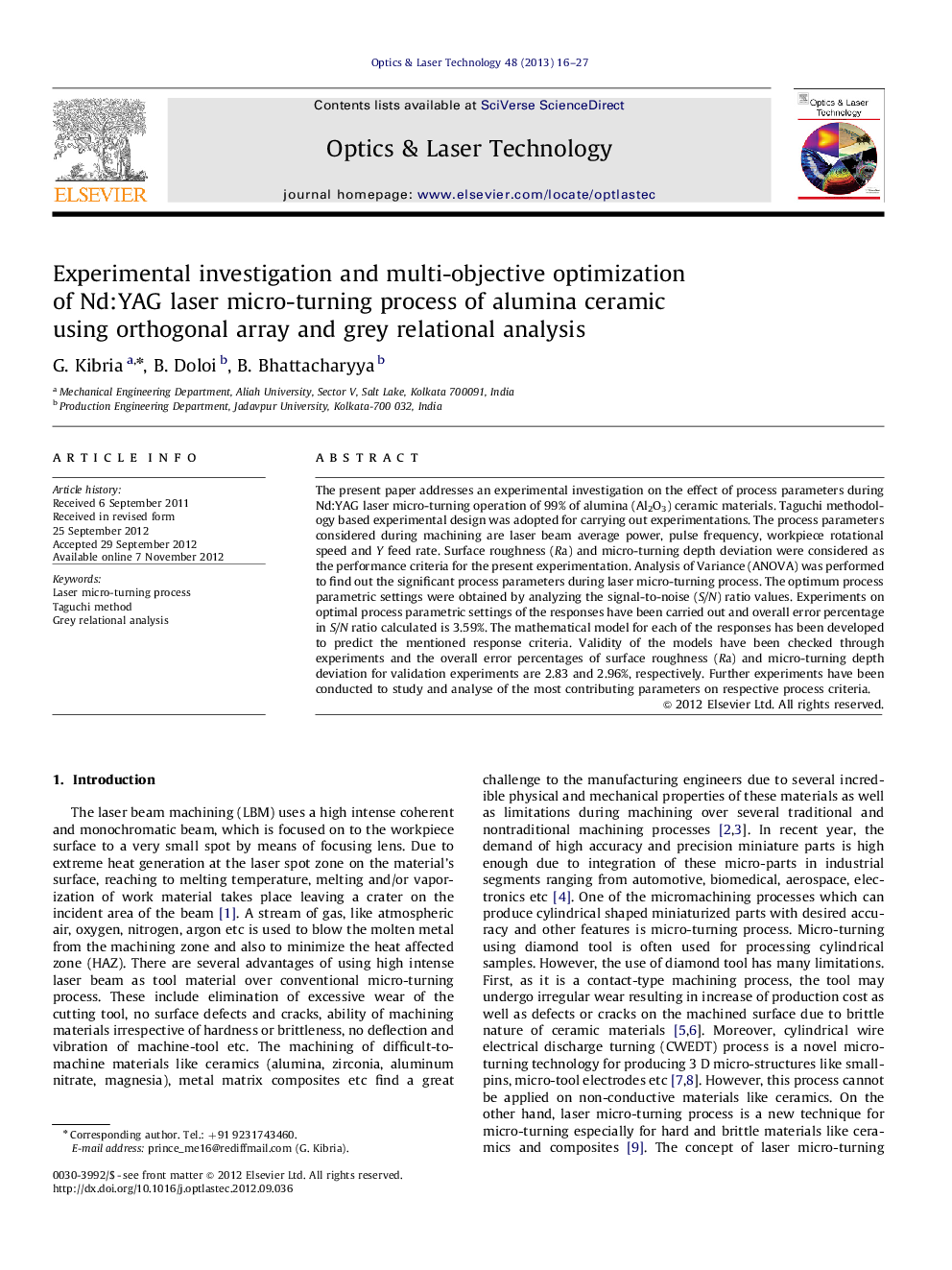| Article ID | Journal | Published Year | Pages | File Type |
|---|---|---|---|---|
| 734436 | Optics & Laser Technology | 2013 | 12 Pages |
The present paper addresses an experimental investigation on the effect of process parameters during Nd:YAG laser micro-turning operation of 99% of alumina (Al2O3) ceramic materials. Taguchi methodology based experimental design was adopted for carrying out experimentations. The process parameters considered during machining are laser beam average power, pulse frequency, workpiece rotational speed and Y feed rate. Surface roughness (Ra) and micro-turning depth deviation were considered as the performance criteria for the present experimentation. Analysis of Variance (ANOVA) was performed to find out the significant process parameters during laser micro-turning process. The optimum process parametric settings were obtained by analyzing the signal-to-noise (S/N) ratio values. Experiments on optimal process parametric settings of the responses have been carried out and overall error percentage in S/N ratio calculated is 3.59%. The mathematical model for each of the responses has been developed to predict the mentioned response criteria. Validity of the models have been checked through experiments and the overall error percentages of surface roughness (Ra) and micro-turning depth deviation for validation experiments are 2.83 and 2.96%, respectively. Further experiments have been conducted to study and analyse of the most contributing parameters on respective process criteria.
► Laser Micro-turning operation on 99% Al2O3 has been performed using Pulsed Nd:YAG laser system. ► Taguchi methodology design (L9 Orthogonal Array) has been utilized to design the experiment. ► Empirical models have been developed for responses such as surface roughness (Ra) and depth deviation. ► Further experiments have been conducted by varying most effective process parameters. ► Experiment and model based data have been compared and confirmed model predicted data are valid.
